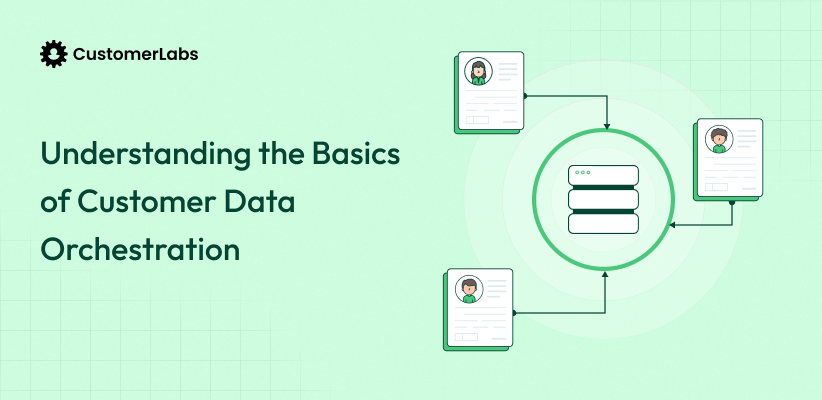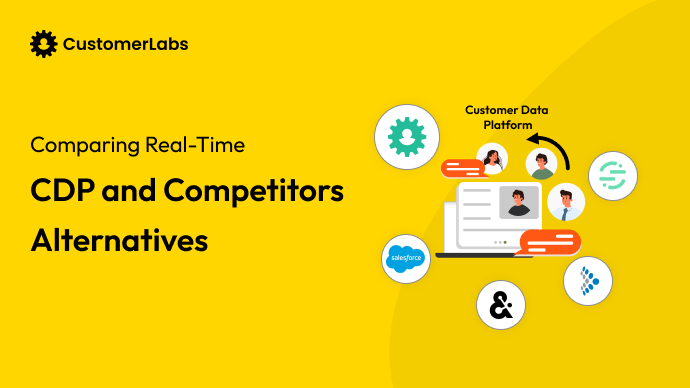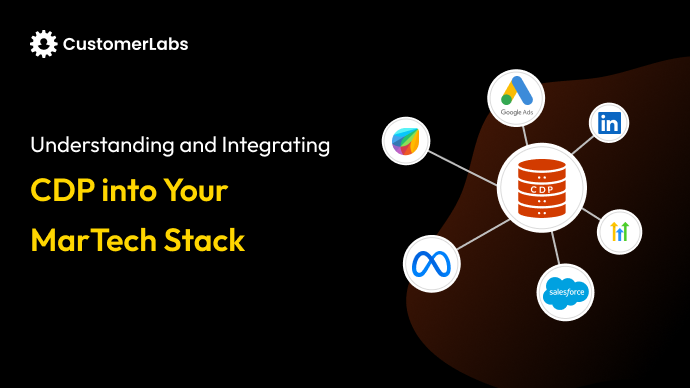
Today, every interaction you have with a brand leaves behind valuable insights. Whether it’s a click, a purchase, or even a simple browse, companies are collecting data that can reveal everything from customer preferences to behavior.
But here’s the catch: a lot of businesses aren’t tapping into this treasure trove of information effectively. They have the data but aren’t sure how to use it to drive meaningful change. That’s where understanding customer data becomes a game-changer.
In this blog, we’ll break down why customer data is not just important but absolutely essential for any business aiming to stay ahead.
What is a Customer Data
Customer data is any information a business collects about its customers, like their contact details, what they’ve bought, and how they interact with the brand. This information helps businesses understand who their customers are, what they need, and how they act.
With good customer data, businesses can create more personalized marketing, make smarter product choices, and offer better experiences. It also helps answer important questions like:
- Who are your customers?
- What do they like?
- How do they shop?
Without clear and accurate customer data, businesses can miss chances to connect with their audience and stay ahead of the competition. By gathering customer data, you can better understand your audience and create more effective marketing campaigns that resonate with them, helping to boost your business’s revenue.
Now that we know why it’s so important, let’s look at the different types of customer data.
Types of Customer Data
There are four main types of customer data, each offering unique insights into customer behavior and preferences. Let’s break them down one by one.
- Demographic Data includes basic information like age, gender, income, and location.
- Psychographic Data goes deeper into customer motivations and values. It includes lifestyle choices, interests, and personality traits.
- Behavioral Data focuses on how customers interact with a brand—such as browsing habits, purchase history, and website activity.
- Attitudinal Data reflects how customers feel about a brand, product, or service. This includes feedback from surveys, reviews, and social media posts.
Each of these data types plays an important role in developing a complete picture of your customer, enabling more effective marketing strategies and stronger customer relationships.
Now that we’ve covered the types, let’s look at how customer data actually plays a role in marketing.
What Role Does Customer Data Play in Marketing?
Understanding the importance of customer data in marketing is key to driving more effective and personalized strategies. Let’s break down how customer data plays a role in enhancing marketing efforts and decision-making:
- Enhances Personalized Marketing
Customer data is the backbone of personalized marketing. By understanding your audience’s preferences, behaviors, and past interactions, you can tailor your messaging to meet their specific needs.
Similarly, targeted email campaigns, driven by data insights, can offer personalized discounts or product suggestions, making customers feel like your brand truly understands them. By using customer behavior data, Denmark’s largest online bookstore boosted email open rates by 290%, click rates by 12%, and conversions by 80%.
- Improves Customer Experience and Satisfaction
Imagine getting a product recommendation that actually fits your taste or receiving an email with an offer on something you’ve been eyeing. These are the kinds of personalized interactions that data makes possible. This approach not only keeps customers happy but also boosts engagement and loyalty.
- Guides Informed Decision-Making
Whether it’s refining a product, expanding into a new market, or deciding which marketing channels to focus on, customer data points to what’s working and what’s not. Instead of relying on guesswork, your brand can base its strategies on concrete insights, which ultimately lead to better-targeted efforts and improved outcomes.
Now, let’s talk about how to actually collect this valuable customer data.
Collecting Customer Data Effectively
When it comes to collecting customer data, it’s not just about gathering numbers—it’s about understanding the people behind those interactions. Let’s look at how to collect different kinds of data and how it helps.
Demographic and Psychographic Data: Surveys, Website Forms
To gather demographic and psychographic data, businesses can use surveys, website forms, and questionnaires. These tools help collect basic info like age, location, and income (demographics), along with deeper insights into values, interests, and lifestyles (psychographics).
Surveys can be sent via email or integrated into websites to allow your business to understand its audience on a personal level and tailor their marketing to specific customer segments.
But it’s not just about the numbers—let’s see how behavioral data comes into play.
Behavioral Data: Website Analytics, Transactional Data
Behavioral data reveals how customers interact with your website and products. Using website analytics tools like Google Analytics, businesses track page visits, bounce rates, and click patterns. Transactional data—purchases, cart activity, and payment history—offers insights into customer preferences and buying habits.
By analyzing this data, businesses can identify trends, optimize their site experience, and personalize marketing efforts, making it easier to predict what customers might want next and improve conversion rates.
Attitudinal Data: Customer Feedback, Reviews
Attitudinal data comes from customer feedback, reviews, and social media comments. This type of data gives businesses direct insight into how customers feel about products and services.
Whether through post-purchase surveys or spontaneous online reviews, understanding customer sentiment helps refine products, services, and messaging. It also highlights areas of improvement, allowing your business to address concerns before they affect broader customer satisfaction and loyalty.
Now, let’s talk about how to use all this data in your marketing strategies.
Using Customer Data in Marketing Strategies
Customer data is essential for creating effective marketing strategies. It helps you connect with your audience and drive better results. Here’s how to make the most of it.
- Segmentation for Targeted Campaigns
Segmentation helps you break down your customer base into smaller, more relevant groups based on shared characteristics. By using data, you can create targeted marketing campaigns that speak directly to each group’s needs and preferences.
Whether it’s demographics, purchase behavior, or engagement patterns, segmented campaigns ensure your message is more relevant and likely to resonate, leading to higher engagement and conversion rates.
- Personalized Recommendations Based on Data Insights
Data allows businesses to offer personalized product recommendations across various channels. For example, when a customer browses products on your website, data can help suggest similar items or upsell complementary products.
Email campaigns also become more effective when they’re tailored to what the customer is most likely to be interested in, based on their previous interactions or browsing history.
- Optimization of Marketing Efforts Using Data-Driven Insights
Data isn’t just for tracking customer behavior; it helps refine marketing strategies. By monitoring key performance metrics like click-through rates, conversion rates, and customer engagement, you can adjust your campaigns in real-time. This means you can identify what’s working and what isn’t, make smarter decisions, and optimize your marketing efforts to maximize ROI.
Now, let’s dive into some challenges that come with using customer data.
Challenges in Using Customer Data
When it comes to using customer data, things can get tricky. Here’s a look at some common challenges businesses face when dealing with customer data:
- Data Inconsistencies and Privacy Concerns
One of the biggest hurdles with customer data is consistency. If data isn’t stored or processed properly, you end up with inaccurate or conflicting information, which can lead to poor decisions.
Imagine trying to build a strategy based on incomplete or conflicting information. You might think a customer is loyal, but their behavior suggests otherwise, or you could misinterpret their preferences entirely. Not only does this mess with your ability to target the right audience, but it can also lead to wasted marketing efforts and poor product decisions.
- Balancing Quantity and Quality of Data
Another struggle is balancing the volume of data with its usefulness. It’s tempting to collect as much data as possible, but more isn’t always better. Data needs to be relevant and accurate for it to be useful. Otherwise, you risk overwhelming yourself with meaningless numbers that don’t lead to actionable insights.
- Compliance with Regulatory Standards
Speaking of privacy, compliance with regulations like GDPR and CCPA is non-negotiable. If your business is collecting, storing, or using customer data, you’ve got to follow these guidelines. It’s a bit of extra work, but ensuring data privacy and transparency isn’t just a legal requirement – it’s good practice that builds customer trust.
Maximizing the Benefits of Customer Data
Customer data is about gaining real insights that can shape the future of your business. Here’s how businesses can make the most of it:
- Driving Product Development Through Customer Insights
Customer data reveals what your audience really wants, including pain points and unmet needs. By analyzing patterns, businesses can refine their products or even develop new ones that better address these concerns, ultimately leading to greater customer satisfaction and engagement.
- Improving Customer Retention and Loyalty
Understanding what makes your customers tick is key to keeping them around. When you know their preferences, behaviors, and needs, you can tailor your communications, offers, and experiences to build loyalty.
CustomerLabs’ advanced segmentation and analytics can help you track these insights and personalize customer interactions at scale.
- Innovating Through Feedback Loops
Customer feedback is invaluable for continuous improvement. By integrating feedback loops, businesses can ensure that their offerings stay relevant. With CustomerLabs’ 1PD Ops platform, you can capture and analyze feedback, then pivot quickly based on what customers are saying—leading to products and services that always align with expectations.
Now, let’s explore how to make customer data work for you at scale.
Managing Customer Data for Better Outcomes
When it comes to managing customer data, things can get pretty overwhelming if you don’t have the right processes in place. But with the right approach, all that valuable customer data is being put to work for you.
Here’s a breakdown of how to handle it effectively:
- Importance of Clean and Accurate Data
For your marketing efforts to be effective, the data you’re using needs to be spot on. Outdated or incorrect customer information can lead to wasted efforts and missed opportunities.
Whether it’s personal details, purchase behavior, or preferences, ensuring your customer data is clean and up-to-date is critical. Without accuracy, even the best marketing strategies can fall flat.
- Tools and Platforms for Data Management
To keep everything organized, businesses need solid tools for managing all the data coming in. CRM systems offer a centralized place where you can store, organize, and access all your customer data. For example, CustomerLabs, a 1PD Ops platform, allows businesses to unify data across multiple touchpoints and sources, making it easier to understand and act on customer behavior in real-time.
Data management platforms (DMPs) are also useful for handling large datasets and making sense of them quickly. These tools make sure you’re not scrambling for information, and help you maintain a smooth flow for your marketing campaigns.
So, now you’ve got all your data in one place—let’s look at how to make the most of it.
Centralizing Data in Customer Data Platforms for Unified Profiles

Centralizing your first party data with a 1PD Ops like CustomerLabs helps create unified customer profiles. Instead of having scattered data across various tools, a 1PD Ops consolidates everything into one place. This not only makes it easier to understand each customer’s journey but also encourages you to deliver more personalized, relevant marketing.
By seeing a complete picture of your customer, you can improve decision-making and build stronger, long-term relationships.
Future of Customer Data Management
As businesses move away from traditional Customer Data Platforms (CDPs), there’s a growing emphasis on First-Party Data Operations (1PD Ops). Unlike CDPs, which centralize data for analysis, 1PD Ops focuses on creating actionable, privacy-compliant workflows that empower teams to act quickly and effectively.
Platforms like CustomerLabs enable businesses to collect, process, and activate first-party data without extensive technical support. This approach aligns with privacy regulations and fosters stronger customer relationships by leveraging owned data.
By streamlining operations and reducing dependency on third-party tools, 1PD Ops helps businesses deliver personalized experiences at scale—meeting customer expectations while staying agile in a competitive market.
Conclusion
Customer data is the foundation for smarter business strategies. By tapping into this data, your business can make better decisions, enhance customer experiences, and drive meaningful growth. A solid customer data strategy empowers companies to understand their audience, personalize marketing efforts, and stay competitive in a crowded market.
If you’re ready to embrace the power of first-party data, CustomerLabs 1PD Ops is here to help you transform the way you approach marketing. By shifting to first-party data strategies, you can unlock actionable insights and gain a competitive edge. Explore our blogs to discover how CustomerLabs can revolutionize your customer data and redefine your marketing game.







